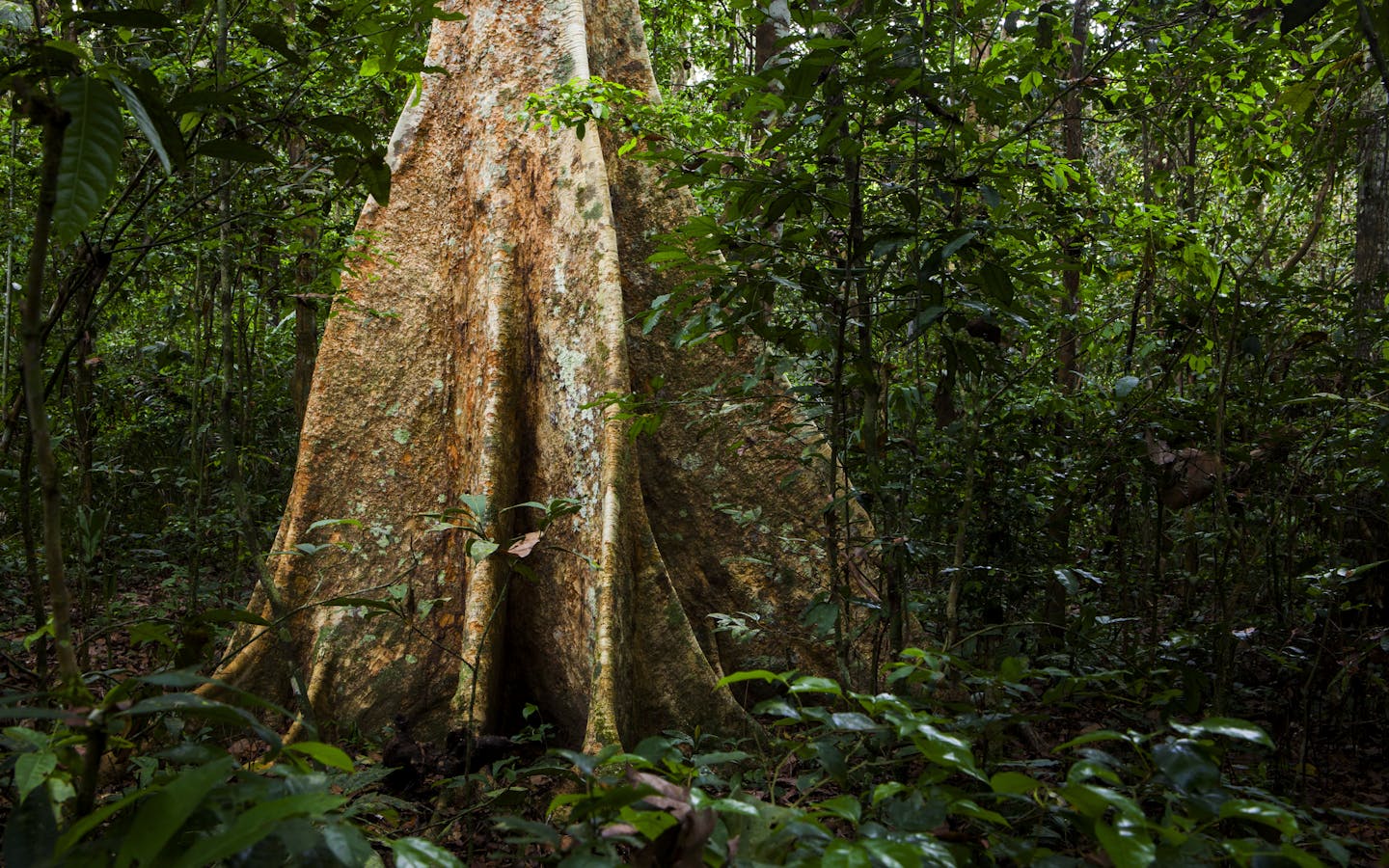REDD+
Reduced Emissions from Deforestation and Forest Degradation, plus the role of conservation, sustainable management of forests, and the enhancement of forest carbon stocks.
Eligibility Requirements for REDD+ Standards and Financing »
About 11% of human-caused greenhouse gases come from the destruction of tropical forests. REDD+ is a climate change mitigation mechanism designed by the United Nations Framework Convention on Climate Change (UNFCCC) to reduce these emissions.
REDD+ creates an incentive for protecting, conserving, and restoring forest ecosystems in developing countries by valuing their carbon sequestration, storage, and other services. For example, a community could receive REDD+ funding, or training to improve yields from existing farmland, in return for avoiding the clearing of standing forests.
Our role
Conservation International develops REDD+ initiatives that are proving that REDD+ can work. We use the lessons we learn from these programs to help design policies that will expand the use of REDD+ around the world.
Our plan
We demonstrate that REDD+ works
Stopping deforestation must be a part of society’s solution to climate change, and REDD+ can be a part of the solution to deforestation. Conservation International works on the ground with local communities, governments, scientists, and other partners to implement REDD+ activities that effectively achieve emissions reductions — while benefiting people and protecting the forests that people, plants, and animals all depend on.
We make REDD+ work for people
REDD+ will only be successful if it provides benefits to local people and local environments. Conservation International engages with policymakers at all levels to help ensure that REDD+ is designed with strong local participation — and that it delivers multiple benefits to people. In fact, Conservation International was a major contributor in the development of standards designed to help REDD+ programs deliver benefits not just to the climate, but also to communities, through the rights-based approach and biodiversity. Our REDD+ initiatives are rigorously evaluated by independent experts to ensure projects improve livelihoods, create employment, protect traditional cultures and endangered species, help secure tenure to lands and resources, increase the resiliency of ecosystems and help to combat climate change.
We build the capacity to implement REDD+
For REDD+ to be successful, a wide range of people, from local communities to government leaders, must understand how it works. Conservation International is a world leader in providing REDD+ training. We help design approaches to REDD+ that engage, actively involve, and benefit communities, that are scientifically sound and that are consistent with globally-recognized best practices.
By the numbers
1,247,800 hectares of at-risk tropical forest protected
Our work around the world is continually growing. By the end of 2020, Conservation International’s REDD+ initiatives have cumulatively protected 1,247,800 hectares of some of the most important forests on Earth in places like Madagascar, Kenya and Peru.
Protecting forests in Peru
Despite its protected status, Peru’s Alto Mayo Protected Forest — an area of Amazonian forest twice the size of New York City — had some of the country's highest deforestation rates. To halt this cycle, Conservation International worked with partners — including local communities, corporations and Peru's government — to develop a REDD+ program. Now, 70 percent of the community in the Alto Mayo basin benefits directly from the initiative; since 2008, the program has generated more than 8.4 million metric tons of emissions reductions — the equivalent of taking nearly 150,000 cars off the road each year.
Calculating your own carbon footprint
Carbon emissions from your lifestyle choices, from transportation to diet, impact the climate. You can be part of the solution by offsetting your carbon footprint. When you offset your footprint, you neutralize your emissions by protecting forests that absorb carbon from the atmosphere. Use our new carbon footprint calculator and offset your emissions today.
Resources
REDD+ Safeguards Best Practices - Literature Review
REDD+ Safeguards Best Practices - Literature Review
Lessons learned from REDD+ Nesting Approaches and Recommendations to Kenya
Lessons learned from REDD+ Nesting Approaches and Recommendations to Kenya






